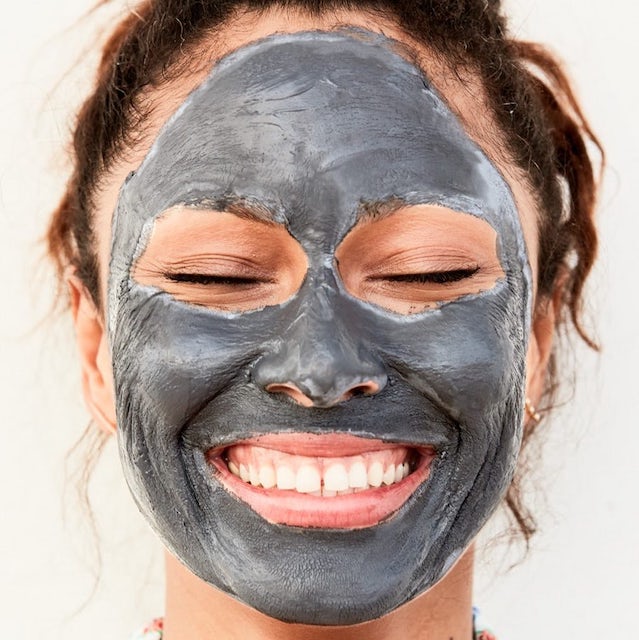Some crazy things happen to our skin during our menopause transition. It’s one of the most visible signs of the changes we are facing internally. If you’ve never gotten into a solid skincare routine, now is a great time to get started.
Your skin is your largest organ. And, just like every other organ in your body, it needs nutrition, hydration & oxygen. On the regular!
How do you know if your skin is getting what it needs?
Well, it’s pretty easy to tell. If your skin feels taut, dry, oily or irritated…it’s telling you something. It’s looking for something.
Our skin does a lot for us. It…
- protects us from things in our outside world, like germs, toxins, sun and cold
- regulates our body temperature
- allows us to feel sensations like heat, itching and pain
- stores things like water and fat
- produces hormones
If you’re like me – maybe you never really thought about how much your skin actually DOES for you.
I never thought of my skin as a functioning, living organ. I guess I saw it as just a ‘wrap’ of sorts. Holding everything in place. I saw it as more as part of my appearance. Not my health.
And, because I am not one of those blessed with amazing skin, I was forever dealing with issues like acne, cysts, rosacea, eczema, etc. For me, skin ‘care’ was more like skin ‘management’ – trying to avoid triggers and symptoms like sensitivity, irritation and breakouts. It meant regimens to tackle and treat. It didn’t mean feeding, nourishing and protecting.
Redefining Skin Care
Once I really learned what skincare was about, it changed everything.
Just like food. When you eat clean, your body works better, looks better and feels better. The same is true for your skin.
When you feed your skin well and remove the toxins, it performs better, looks better and feels better. Healthy skin has a healthy glow.
And, just like food – ingredients matter.
You want skincare products that are designed to provide the nourishment, hydration, and protection your skin needs. But, none of the junk that it doesn’t need.
When you really start to learn about ingredients, you realize how so many of the products we use are loaded with fillers that do nothing but give our bodies one more thing to filter and deal with. (The last thing we need these days.)
When I advise people about their skincare regimen, I usually recommend that you start with the core basics. You can always build and customize from there. Kind of like nutrition. You need vegetables, fruit, grains, nuts and seeds. From there, you can customize based on what you demand from your body on a daily basis and the environment you live in.
So, what are the core basics of a good skincare regimen?

Your skincare regimen should cover each of the following four steps:
1. Cleanse
This gets rid of impurities. Removes makeup and anything else that might have found its way onto your skin during the day. You need a good cleanser — one that purifies without stripping moisture from your skin.
2. Prep
This step helps your skin get to the optimal ph levels so it can maximize the benefits of treatments and absorption of products. This can be a toner or an essence. It’s amazing how much more effective your skincare regimen is when you add this step. Skip it and you miss out on seeing the best results from the products you are using.
3. Treat
Now that your skin is balanced and ready to absorb, you add your treatment – serums, oils, and other actives. This is the step where you add in concentrated active ingredients that address your skin’s specific needs – sun damage, fine lines, acne, hydration, dullness.
4. Protect
Once you’ve cleansed, prepped and treated your skin, you want to seal it in and protect it. Moisturizers help lock in moisture and strengthen your skin barrier. But, you also want a moisturizer that allows your skin to do its job – breathe, filter, renew.
Oftentimes, a skincare regimen will include a different moisturizer for morning vs. nighttime. That’s because our skin plays ‘defense’ during the day protecting us from environmental stressors, while at night our skin goes into ‘repair’ mode. Night creams tend to be thicker, while day creams are formulated to feel lighter and wear well with makeup.
You will get the best results when you use a four-step regimen both morning and night. In your morning routine, you want to focus on protection. At night, you want to focus on replenishing.
What’s missing from your routine?
As you read through these four steps, is there anything missing from your routine? Are you taking good care of your skin?
Are you noticing changes in your skin? Is there something you can add to help round out your routine so you get better results? Are you using the right regimen for you? Are the ingredients clean and safe?
Skincare Consultations
If you need some help filling in some of the gaps or deciding how to address any specific skincare concerns you have, please reach out. I’m happy to make some recommendations.
Getting a simple, effective skincare routine in place will help so much through your menopause transition. Now is the perfect time to get started.
P.S. If you enjoyed this post, you’ll love my weekly newsletter on Substack. It’s called The LIFT + it comes out on Sundays. You can check it out & subscribe here.

